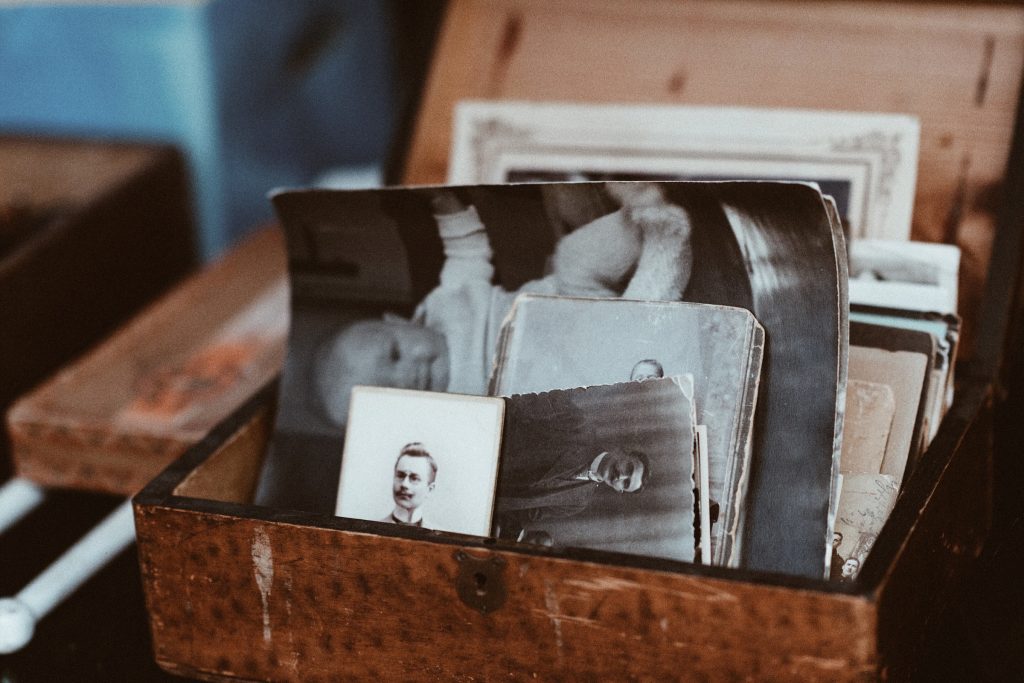Decluttering with Awareness: How to Let Go of Sentimental Items Without Guilt

Understanding the Emotional Attachment to Belongings
In today’s fast-paced society, where new trends and products emerge almost daily, it is no surprise that many people grapple with the urge to hold onto sentimental items. The objects we retain often tell stories—of love, relationships, and pivotal life moments. However, the profound emotional ties we develop to these possessions can sometimes hinder our personal growth and the enjoyment of our spaces.
Sentimental Items: More Than Just Clutter
Take a moment to reflect on the items that occupy your home. For instance, a cherished childhood toy may evoke nostalgic memories of carefree days spent playing without worries. Yet, as adults, we may find that such items no longer serve any functional purpose. Similarly, consider gifts from friends, such as a decorative piece you feel obligated to keep. The guilt associated with discarding such items can quickly lead to a cluttered environment that stifles creativity and peace.
Family heirlooms, which carry a legacy of their own, present a unique dilemma. Items like traditional woven baskets or intricately designed jewelry may connect us to our heritage, but if they clutter our homes, they can transform from symbols of pride into sources of stress and chaos.
Steps to Decluttering with Awareness
Decluttering with awareness is not merely about tossing out items; it is about engaging in a thoughtful process of evaluation. Start by identifying what each item means to you. Does it spark joy? Does it serve a purpose? Can it be repurposed or shared with someone who would cherish it more? Such questions can guide you towards making informed decisions about your belongings.
The Role of Emotional Clarity in the Decluttering Process
Achieving emotional clarity is essential for letting go of items that no longer resonate with your current self. It’s beneficial to approach decluttering as an opportunity to create space—not just physically, but mentally. In Nigeria, where communal living is prevalent, clearing out clutter can also foster stronger relationships by allowing for shared spaces that feel more open and inviting.

Furthermore, understand that letting go of certain possessions can pave the way for new memories and experiences. For instance, ask yourself if an unused heirloom could bring joy to a loved one. Imagine gifting that beautiful handcrafted item to a friend as a symbol of appreciation. This act not only allows you to declutter but also strengthens connections with those around you.
Conclusion: A Journey Towards Freedom
In conclusion, the journey of letting go of sentimental items is one that can lead to a liberating outcome. By embracing the process of decluttering with consciousness, you can transform your living space into a sanctuary that mirrors not just your past, but your desired present and future. As you embark on this path, remember it is about reimagining your connection to these items and choosing what truly enriches your life. It’s time to explore this transformative journey without the heavy weight of regret.
RECOMMENDED: Check out this similar article
Identifying Your Emotional Triggers
To begin the journey of decluttering with awareness, it is vital to recognize the emotional triggers associated with your belongings. Each item carries a story, often tied to a specific experience or person in your life. Understanding these connections can help you navigate the emotional landscape of letting go. For example, a graduation gown might symbolize not just an achievement but also the friends and family who supported you through your educational journey. Acknowledge the sentiment, but also discern whether the item continues to serve a practical or uplifting purpose in your current life.
Begin by creating categories for your items based on their emotional significance:
- High Sentimental Value: Items that are irreplaceable and deeply connected to pivotal moments.
- Moderate Sentimental Value: Belongings that elicit fond memories but are not essential to your daily life.
- Low Sentimental Value: Things that you feel obligated to keep but perhaps do not inspire joy or usefulness.
By sorting items into these categories, you may find that many things fall into the moderate or low sentimental value brackets. Realizing that some possessions only serve to clutter your space can empower you to let go without guilt.
Practicing Gratitude While Letting Go
The act of letting go can be transformed into a practice of gratitude. Instead of fixating on the loss, reflect on the joy that each item once brought into your life. For instance, if you’re faced with parting ways with a family photo, take a moment to remember the happiness of that day, the connections between family members, and the lessons learned. Document these reflections in a journal, which can serve as a tool for processing emotions and reminding you of the memories without the need for physical items to hold onto them.
Another strategy is to gift sentimental items to loved ones who may find joy in them. This not only honors the memory associated with the item but also opens the door for new experiences. Imagine you have a beautifully handcrafted fabric that belonged to your grandmother. Rather than storing it away, consider passing it on to a niece or nephew who appreciates the craftsmanship and can carry forward that legacy, all while creating space in your own home.
Establishing Boundaries for Sentimental Items
As part of your decluttering process, it’s essential to set boundaries around sentimental items. Determine how much space you are willing to allocate for these belongings. Establishing a specific area for keepsakes can prevent overflow into your living space while allowing you to keep cherished items meaningful. If the allocated space becomes overcrowded, it’s a clear indicator that it may be time to reassess what truly holds value for you. This approach not only helps in managing clutter but also fosters a mindfulness regarding what you choose to keep.
In this manner, it becomes possible to navigate the emotional currents tied to material possessions with confidence. The path to emotional clarity allows you to embrace the art of decluttering with awareness, fostering a living environment that reflects not just your past, but your intentions for the future.
| Advantage | Description |
|---|---|
| Increased Mental Clarity | By removing unnecessary items, you create a clearer mental space, allowing for improved focus and productivity. |
| Emotional Freedom | Letting go of guilt tied to sentimental items fosters a sense of emotional liberation, empowering you to cherish memories without physical reminders. |
| Simplified Living Environment | A decluttered space enhances harmony and aesthetics in your home, enabling you to enjoy your surroundings more fully. |
| Encouragement to Make Mindful Decisions | You develop a mindful approach to possessions, prioritizing items that genuinely add value to your life. |
As you delve into the process of decluttering, it is crucial to recognize the impact of your environment on your well-being. A cluttered space can be overwhelming, leading to stress and anxiety. By embracing the philosophy of letting go, you can transform this anxiety into a sense of empowerment. A notable aspect of this journey is the importance of being mindful about what you retain. Approach each item with intention and reflection, asking yourself whether it serves a purpose or brings joy.Utilizing techniques such as the “four-box method” can further facilitate this process. Label four boxes as “Keep,” “Donate,” “Sell,” and “Trash.” This system not only helps categorize your belongings efficiently but also encourages decisive actions regarding each item. As you witness the physical space around you shrink, allow yourself to bask in the emotional lightness that often follows decluttering.Moreover, the concept of sentimental attachment warrants deeper exploration. Memories and emotions tied to objects can be profound, yet clinging to them can sometimes hinder your progress toward a more fulfilling life. Understanding that these memories reside within you and can be recalled at any time can help you release the grip of physical items.
RECOMMENDED: Check out this similar article
Creating a Memory Bank
In a world where nostalgia often leads to clutter, establishing a memory bank can be an effective strategy to let go of physical items while preserving cherished memories. Think of a memory bank as a digital space where you can store images and stories of your significant belongings. This can range from photographs of your grandmother’s cane chair to documented memories attached to souvenirs from family vacations. By doing so, you create a visual representation of your history without the physical burden of these items.
Many individuals today are turning to technology for assistance. Simple smartphone applications allow you to capture images of various items, tagging them with stories or particular feelings associated with them. This modern solution caters to the inclination for sentimental attachment while making space for a lifestyle that’s less encumbered by physical possessions. You might even decide to curate a digital album that tells a story of your journey with particular items, enriching your narrative without the need for tangible reminders.
Mindful Shopping to Prevent Future Clutter
As you navigate your decluttering journey, it’s vital to develop mindful shopping habits to prevent clutter from accumulating in the future. In Nigeria, where cultural ties to objects can run deep, consider how new acquisitions might fit into your life. Are you purchasing an item because it connects you to your heritage? If so, evaluate whether it truly enhances your life or simply perpetuates the cycle of holding on to things for the sake of nostalgia.
Before buying, ask yourself three critical questions:
- Does this item serve a purpose? Think about how the item will integrate into your daily routine. If it isn’t useful, it may simply take up space.
- Am I buying this out of necessity or impulse? Impulse buys can often lead to clutter; recognizing the difference is key.
- Will this item enhance my life or simply become another possession? Focus on purchases that uplift your living spaces and enrich your daily life.
By adhering to these criteria, you’ll cultivate intentionality around each purchase, allowing you to build a collection that resonates with your current stage of life. In communities across Nigeria, where certain items can symbolize family bonds or cultural identity, exploring the emotional significance of potential purchases can significantly aide conscious consumerism.
Understanding the Cycle of Letting Go
Letting go of sentimental items often taps into a much larger cycle than just decluttering; it symbolizes transformation and growth. In Nigerian culture, where memories and lineage often intertwine, understanding that letting go can also mean making space for new experiences and memories is crucial. Each time you part with an item, view it as a step towards embracing new opportunities, relationships, or adventures.
The process of decluttering is not merely about discarding items but about acknowledging the roles they’ve played in your life. For instance, an old wedding dress may carry bittersweet memories, but by letting go, you not only honor your past but also open doors to new beginnings. This cyclical mindset encourages a healthier relationship with your belongings, paving the way for a lifestyle rich in awareness and intention.
Ultimately, the journey towards decluttering with awareness can empower you to live more fully in the present. By acknowledging emotional triggers, practicing gratitude, and embracing new strategies for memory preservation, you can navigate the delicate balance of sentiment and practicality, creating a living space that reflects both your cherished past and an exciting, uncluttered future.
ADDITIONAL INSIGHTS: Expand your understanding here
Conclusion
In conclusion, decluttering with awareness is a transformative process that invites you to navigate the intricate relationship between sentimentality and practicality. As we’ve explored, letting go of sentimental items does not mean denying their importance; rather, it is about recognizing the stories they carry and choosing how to honor those narratives in a meaningful way. Establishing a memory bank enables you to capture the essence of cherished belongings without the clutter, while developing mindful shopping habits fosters a deliberate approach to new acquisitions. This holistic perspective encourages a lifestyle where each item you own enriches your current experience.
Moreover, understanding the cycle of letting go aligns beautifully with the cultural fabric of Nigeria, where respect for heritage intertwines with the necessity for growth. By letting go, you create space for new experiences and relationships, shifting your focus from the past to a vibrant, uncluttered present filled with possibilities. This journey is not merely a physical endeavor but a mental and emotional one, helping you cultivate gratitude and awareness throughout the process.
Ultimately, decluttering with awareness empowers you to embrace a life that reflects both the memories that shaped you and the aspirations that motivate you. By prioritizing a meaningful connection with your belongings—as well as the mindful management of new possessions—you can foster a warm, inviting home that not only cherishes your journey but also invites the adventures that lie ahead. Embrace it with a clear mind and an open heart, and you will discover the true freedom that comes from living with less.



